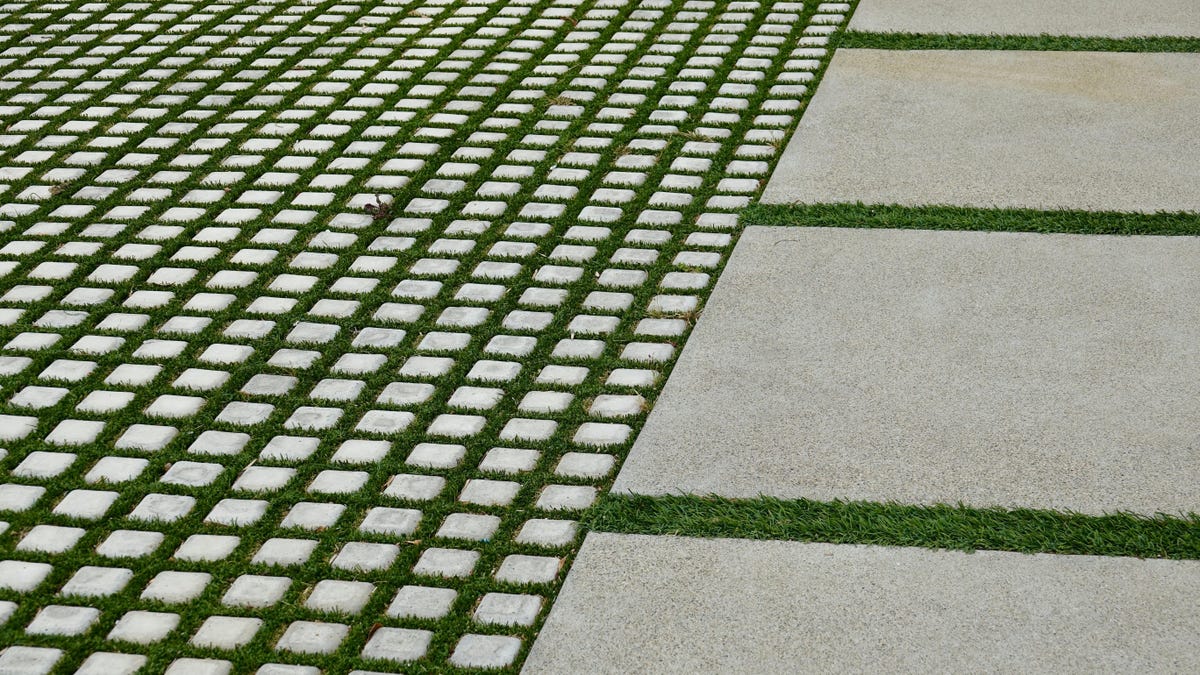Why You Might Actually Want a Grass Driveway

Economical, erosion resistant and chemical resistant, heavy duty grass driveway does not get the respect it deserves. But if rainwater runs down your gravel road, washing away dirt or leaving trenches behind, this might be the solution for you. Using a system of interlocking paving stones, the grass driveway is a structured mesh with enough room for grass or other plants to grow, helping to absorb running water and preventing land from sinking.
It is ideal in areas where heavy rains can cause flash floods or where prolonged rains soak the ground, leaving it loose and prone to erosion.
Benefits of a driveway lawn
In addition to preventing erosion, grass driveways also help trap any chemicals your car throws out when parked in the driveway, including traces of gasoline, antifreeze, and chemical defrosters. Absorbing these substances before they reach stormwater runoff and then into groundwater will help keep water pollution to a minimum.
Another advantage is that they are easy to install and you can usually do it yourself. If you want to create a new driveway or parking lot, all you need is a flat or gently sloping piece of land, a shovel, pavers, and your plants. Netting systems don’t even require a lot of digging as they can be laid on top of existing grass and pressed into the soil. To use paving stones, you need to remove the existing grass with a shovel, level the area, lay the paving stones, fill the space between them with soil, and scatter the grass seeds. If you are going to use the split road method, you can use pavers to create two lanes of tires in the same way you would lay masonry paving. You can also pour concrete strips, but this is more difficult and requires additional preparation. (If you go this route, you may need to hire a professional.)
Grass driveways are also cost effective. Since you can usually do the work yourself, you can save a lot of money. In addition, the cost of materials varies from $700 to thousands of dollars, depending on the size of the area you want to cover and the type of paver you choose; on the other hand, paving a driveway will probably cost you about twice as much.
How to make a grass path
To make a grass driveway, you need to choose which type to use. Mesh-cut concrete pavers , plastic mesh pavers , and divided driveways, also known as belt driveways, are all ways to incorporate some plants into your paved area. Depending on how you want your surface to look, opting for masonry, a grid system that will be mostly invisible, or a couple of stripes with plants in between will give you completely different looks.
Once you have chosen the type of pavement, it is also important to choose plants that will survive when passed. In addition to the appearance and hardiness of the plants you choose, consider the climate as well. Grass options that will help absorb water and support the weight of a car include zoysia , perennial ryegrass , Kentucky bluegrass , cane fescue , and bermuda grass . As for other travel plants, you can also try clover and thyme – they will withstand a certain amount of abuse and still come back for more.